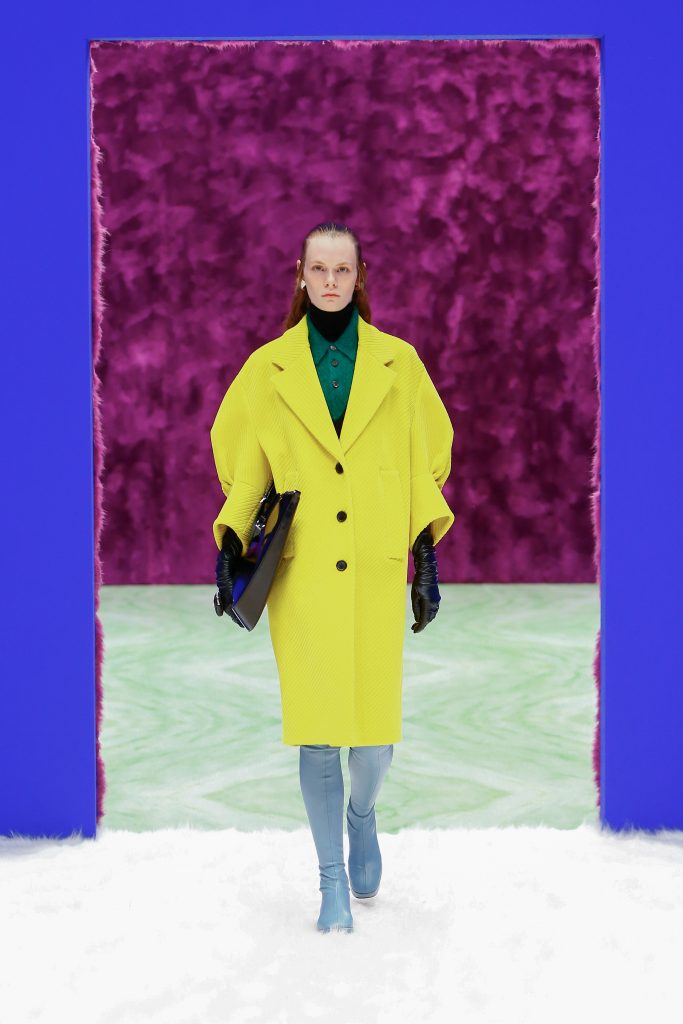After what almost feels like a year from my last “Introductions” post, I’m surprised it took me this long to write about my favorite brand. My obsession with the brand started off as a joke. Being obsessed with fashion at a young age caused a lot of “The Devil Wears Prada” jokes with me. Thus creating interest in the brand.
Founded in 1913 by Mario Prada, the brand originally specialized in leather handbags, travel accessories, etc.Their first shop was called “Fratelli Prada”, translating to Prada brothers, was owned and operated by Mario and Martino Prada. There is where they sold animal goods, English steamer trunks, and handbags; something that was very common for famous brands during this era. Mario believing women shouldn’t run the company eventually passed the brand onto his daughter, Luisa Prada, when his son didn’t want it. (The irony of it all). Through Luisa is where we are given Miuccia. Born as Maria Bianchi on May 1oth, 1949 in Milan to Luigi Bianchi and Luisa Prada. She would later take the name Miuccia Prada in the 80s after being adopted by an aunt. Miuccia was the youngest of three, older siblings including Albert and Martina.
Surprisingly Miuccia had very little interest in fashion at the beginning. Graduating with a PhD in Political Science from the “University of Milan” her career did not push her in the realm of Prada until later on in life. She trained as a mime at the “Teatro Piccolo” and performed for five years, was a member of the Italian Communist Party, and was involved with women’s rights movements in the 70s. It wasn’t until the mid-seventies where Miuccia would take over the family business. During this time she met Patrizio Bertelli who had started his own leather good business at the age of twenty-four and would eventually become her business partner and future husband. Patrizio was the one to advised Miuccia on the end of steamer trunks and change the products of the brand. This is what lead us to the infamous nylon bags.
By 1979 Miuccia released the first collection of backpacks and totes made of nylon. This is the same nylon that was used as coverings for the trunks. Ten years later in 1989 the first women’s ready-to-wear collection would be released. This collection was known for their dropped waist and narrow belts. The brand would gain popularity for their clean lines and basic colors. Prada in a way is considered “Ugly Chic” mixing the old and new the ugly and chic. They are all about function rather than beauty. Towards the 90s is where Prada really starting gaining its popularity. With fashion in this era being loud and full of many colors, Prada brought the opposite. Being in a way, the ugly duckling which is what made them more interesting. A lot of earlier collections resonated with audiences due to the fact that it was perfect for the every day woman.
The brand continues being a leading force in fashion due to the juxtaposition in collections and overall aesthetic. Not just women’s ready-to-wear but men’s as well. Not to mention Prada Sport and Prada Linea Rossa. Prada Sport was sportswear line created in 1998 that now does not produce as much as before but is still in effect. Prada Linea Rossa has caught the eye of streetwear culture and is kind of what took over Prada Sport when Barrett left the company. As well as Miu Miu, which is viewed as a little sister to the Prada line (I’m obsessed with both). Other than clothing, the company has “Fondazione Prada” which is an institution devoted to artists in Milan. Raf Simons has joined the Prada team and we’re just getting a feel for what he will bring to the brand. With only a few collections from the duo I still don’t have an opinion on his impact but so far so good. The one thing I love about Prada is the variety in aesthetics, as someone who likes to dabble in all it’s nice to have a brand that does that in such a way that I feel compliments my personal style.











